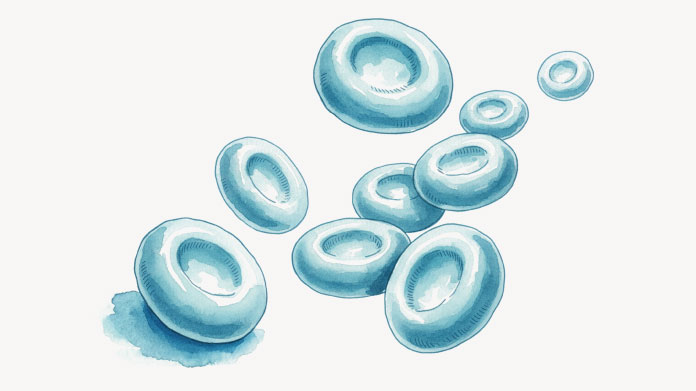Everything you need to know about vitamin E, tocotrienols and tocopherols!
Getting plenty of vitamin E? Of course you are! But, wait a minute. This vitamin is more complex than it seems. What exactly does it do? Which form should you take? What is the difference between tocopherols and tocotrienols?

What does vitamin E do?
Vitamin E - like all vitamins - plays an essential role in the body. Stored in adipose tissue, it has significant antioxidant properties and is a highly-effective free radical scavenger. It protects the body’s cells from harmful oxidative stress and degeneration, thus fighting the effects of ageing. It is also involved in many metabolic processes (neuromuscular, for example) as well as in regulating cell growth.
What are the benefits of vitamin E?
As a result of the very many studies conducted on vitamin E, we now know that it protects against cardiovascular disease by preventing the formation of blood clots and reducing levels of ‘bad’ LDL-cholesterol. It may thus lower the risk of heart attack and stroke. Other studies have demonstrated vitamin E’s benefits in preventing certain forms of cancer (such as prostate cancer in smokers), and infectious diseases (via the immune system). Last but not least, a study published in the report of the American Psychiatric Association suggests vitamin E has a mildly preventive effect in early Alzheimer’s disease.
Which foods contain vitamin E?
Vitamin E is readily available from the diet – vegetable oils such as sunflower, rapeseed and olive oil are all good sources. It is also present at beneficial levels in nuts such as almonds and hazelnuts and in dark green leafy vegetables, particularly cabbage. What is important in ensuring a good intake that meets your daily requirements (12mg/day for adults) is to eat a variety of foods rich in vitamin E. By way of example, one tablespoon of sunflower oil (approx. 15ml) provides 6mg of vitamin E, and the same quantity of wheat germ oil provides 21mg.
What are the consequences of a lack of vitamin E?
Relatively rare in humans, vitamin E deficiency is generally only seen in people with gastrointestinal malabsorption diseases (for example, Crohn’s disease). That doesn’t mean, however, that everyone else is consuming enough vitamin E to meet their needs. A study conducted in the US and Canada, published in the Journal of the Academy of Nutrition and Dietetics, showed that the vitamin E requirements of Americans were not being totally met by their diet. Deficiencies can manifest as muscular and neurological problems.
Tocotrienols and tocopherols: what’s the difference?
The term ‘vitamin E’ actually covers eight different compounds: four tocopherols (alpha-, beta-, gamma- and delta-tocopherol) and four tocotrienols (alpha-, beta-, gamma-, and delta-tocotrienol). Tocotrienols are distinguished by their three double bonds. With a greater number of unsaturated bonds, they penetrate more easily to the heart of the body’s cells. These double bonds also increase the molecules’ antioxidant capacity.
Tocotrienols and tocopherols: which should you choose?
Of all the forms of vitamin E, alpha-tocopherol is the most abundant in the body. However, in order to fully benefit from the vitamin, we need to ingest all its different compounds. Though tocotrienols are less well-known than tocopherols, research suggests their properties may be highly beneficial for our health. An American study from 1995 showed that tocotrienols may reduce the risk of atherosclerotic blockage in the carotid artery. According to several studies conducted in the 1990s, they may also be able to control and reduce cholesterol produced by the liver, a property not shared by tocopherols. The problem is that tocotrienols are much rarer than tocopherols and are therefore less available in supplement form.
What’s the difference between natural and synthetic forms?
Vitamin E is available in two forms – natural (as provided by the diet and by supplements) or synthetic (provided by supplements only). The natural form is better absorbed by the body – its bioavailability is up to twice that of its synthetic counterpart. You’d need to take 1.5-2 times more synthetic vitamin E to obtain the same effects. Note too that most of the vitamin E in capsule form – whether natural or synthetic – consists primarily of tocopherols, particularly alpha-tocopherol. It’s therefore well worth reading the labels of vitamin E supplements carefully to establish the exact composition. Ideally, they should contain all eight compounds, or at least all four tocopherols. Another point worth noting is that vitamin E acts synergistically with other antioxidants and it is therefore beneficial to combine it with vitamin C.
Keywords
9 Hours
Prompt delivry !!👍
Prompt delivry !!👍
SWEET Christine
21 Hours
Good delivery and flawless quality
AS far as delivery and the visual quality are concerned, Supersmart is excellent. I will not comment on the efficacy of the products themselves, since that is only possible over a longer period and in a large customer base compared to people who do not consume a particular product.
Roger De Backer
2 Days
Perfect services
Perfect services, perfect support, great articles about products
Michaela Alali Beitlová
2 Days
Great experience and effective supplements
I’ve purchased many types of supplements from this company over the course of years to treat a few issues, and I’m satisfied with their quality. After using them consistently for a period of time, I can say they met my expectations and I could feel real health benefits that built up over time. Deliveries are always quick. I recommend this company to anyone looking for high-quality supplements.
Giordano
2 Days
Es hat alles gestimmt
Es hat alles gestimmt. Top
marina thieme
5 Days
Great product
Great product, but still evaluating its effectiveness. Highly recommended. Super efficient delivery.
Chalise
9 Days
Quality products
Quality products , efficient and effective customer service. You can’t ask more
CLaudia
15 Days
Good quality product and customer service.
So far, I'm liking this product, and the customer service was very good.
ELZL
22 Days
The products I use are excel·lent
The products I use are excel·lent
ROSAS Josep Maria
30 Days
Delivery is prompt and I never saw a…
Delivery is prompt and I never saw a quality problem with the manufacturing. It is not possible to assess efficacy on a personal basis, since too many factors come into play. Efficacy can only be assessed statistically with a sufficient number of cases.
Roger De Backer
31 Days
I collaborates with the Supersmart…
I collaborates with the Supersmart more than 10 years. Every thing is going good. Quality of the things is good. Delivery comes in time. Five stars definitely !!!
Oleksiy
31 Days
All good
Simple, frictionless site, easy ordering, good delivery updates and execution.
Chris Robbins
33 Days
I feel better
I feel better
Peter Ammann
34 Days
Prompt delivery
Prompt delivery
JAKUB Radisch
35 Days
My new go-to for top quality supplements!
I am buying more and more of my supplements from this superb, high quality company. Cannot recommend it enough. Plus, excellent customer service with a quick, helpful team and speedy deliveries. Highly recommend Supersmart!
Cecilie H.
of experience
your money back
##montant## purchase




Jonson M.
13/11/2020
thankes for great informatin but the most important to Know there are many Signs of vitamin E deficiency such as : Muscle weakness Walking difficulty Numbness and tingling in arms Vitamin E is needed for night vision Vitamin E for muscle cramps Vitamin E immune system Vitamin E for dry skin and hair loss Vitamin E for wounds You have a weak digestive system Ability to dissolve a fresh clot